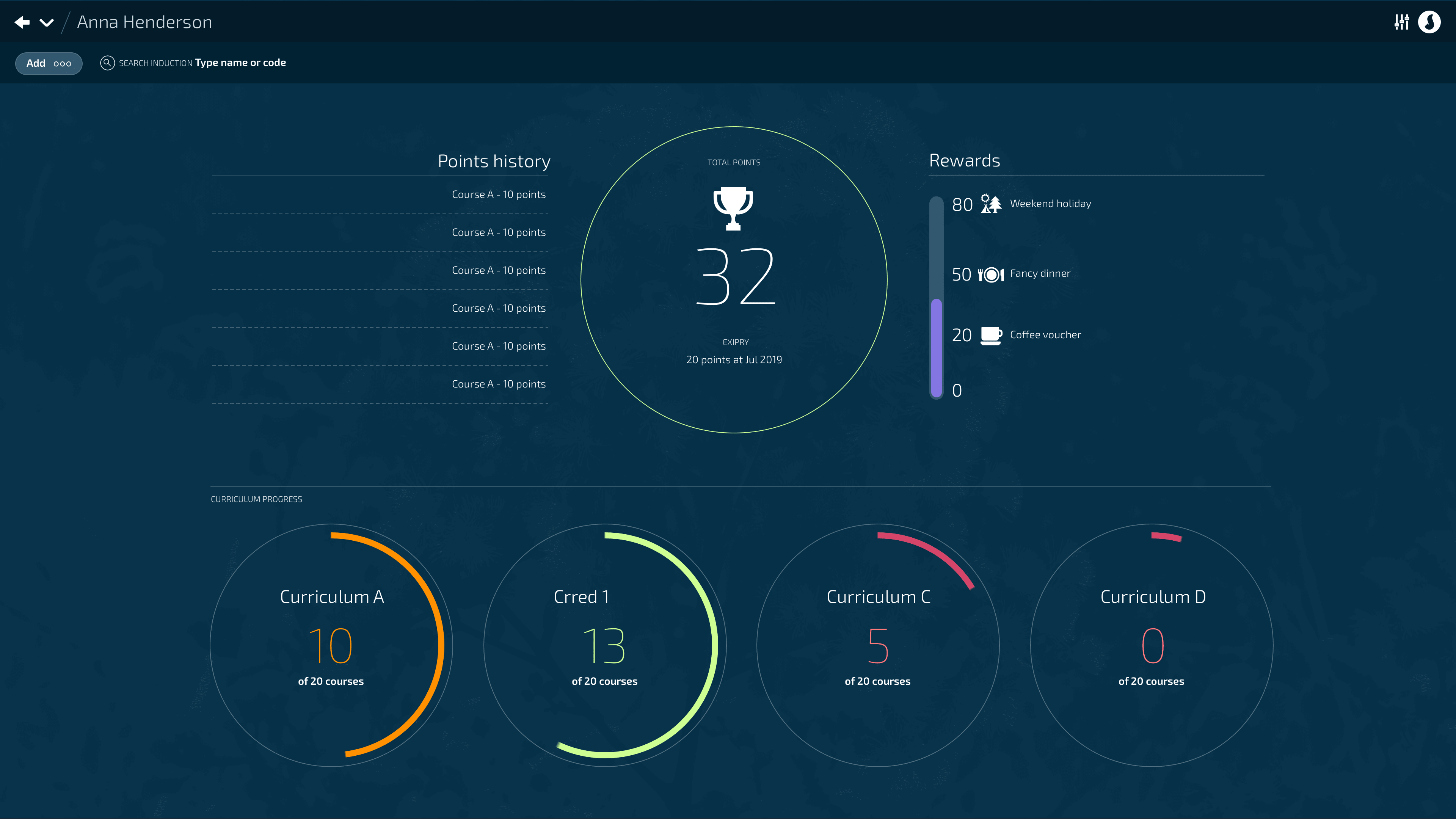Whilst sometimes seen as a 'nice to have', offering employees training plans throughout their tenure is increasingly seen as an essential part of engaging and motivating employees and securing their long-term loyalty and tenure. Learning and development is non-negotiable since new hires won’t stick around if they feel they’ve been left to fend for themselves.
Even employees who’ve been with you for years could be feeling demotivated and unloved if they’re not being challenged with new things and don’t have access to employee training programs. With the rapid switch to hybrid working, employers have been faced with even greater challenges to ensure people working solo don’t feel left out of professional development, keeping up with the fast pace of business and technological change. However, enrolling people into endless webinars and lectures have the potential to bore people to tears with the risk that little of the delivered coaching actually being retained for future hands-on use. For employee training to be effective and deliver value, you need to think about a tailored approach.
Here are six tips to tailor your training plans so you can get the very best from your training budget, whilst maximising engagement and recall.
1. Consider introducing personalised learning

Personalised learning is a system that uses artificial intelligence to adapt the way employee training and development is delivered to each individual. It’s designed to optimise the delivery of information according to a person’s specific knowledge and can even automatically test them via short, frequent multiple-choice games or quizzes. If the online learning platform detects that someone is struggling in a particular knowledge area, it will automatically attempt to present the information in a new way and will ensure to re-test in this area before moving on to the next module.
Bertrand Dussert, formally vice-president of human capital management at Oracle (and now Vice President of Talent Management at Tenet Healthcare), advises nearly one-third of Fortune 100 companies (in the USA) in any two-year period. According to Dussert, many of those larger organisations are making the move towards personalised learning. There’s a few reasons for this. Lecture-style learning, where a facilitator uses traditional delivery methods used at the same pace for all employees is not just expensive, it’s dry and mind-bendingly boring. In 2016, Oracle surveyed a large swathe of its people and found that only 41% believe the company’s onboarding system actually set them up for success.
When you think about it, personalised learning really does make sense for skills development. We live in a world of intelligent suggestions from the apps we use everyday. Think recommendations from Amazon that are perfectly relevant to our habits and buying patterns. Netflix gets to know the types of series and films we love and hate, suggesting just the right fix to get us in the mood. And Spotify has a knack of suggesting the right tracks that are missing from our playlists.
So what if a training plan wasn’t just some big standard-issue manual that gets dished out to each and every employee? What if it was possible to intelligently fill the gaps in people’s knowledge. This is the whole idea of a personalised learning approach, with courses that adapt to people’s existing level of knowledge and giving them on-demand access to snack-able learning and employee development materials that support them, as and when a specific need arises.
2. Adjust training plans to individuals’ own learning style
One thing you should avoid doing is assuming that all people learn in the same way. If you think back to school or university, you’ll probably remember some people who excelled at the very academic subjects and were able to cram everything in and then regurgitate it in a single exam, becoming the basis of their grade and qualification. Others may have been great at more vocational, hands-on-type courses and were able to demonstrate their skills and knowledge more through coursework and graded hands-on assessments.
The same principle applies to training and development in the workplace. Classroom-style lectures (or 400-page manuals) are not going to be right for everyone. For each individual in your organisation, think about how that person learns. Is it through visuals and audio, or through the written word? Would they understand and capture knowledge better through hands-on activities? — or perhaps by completing a task and talking about it out loud as they complete it? If you can start to understand someone’s learning style you can then tailor the delivery accordingly. This is essential for realising the right business outcomes and return on investment. If you assume everyone learns the same way and deliver a uniform approach across the board, a huge chunk of your training budget could be going right down the drain.
What about learning speed? Different people learn at a slightly different rate to each other. In fact, Harvard University found that ‘faster learners’ are not necessarily smarter. Given that different people have an optimal pace of learning, it makes sense to offer modules in a self-paced style, so people can learn in short bursts, at the time when their brain is most receptive to new information. Training programmes that are scheduled during the busiest working hours can be stressful for some, especially if they perceive it as eating into urgent project time. Think about giving people the best of both worlds — with some mandatory scheduled sessions, plus elements that people can slot in when it feels convenient.
You might not have a high-tech learning system that tells you which module is the best fit for each person, but you most likely have feedback from past training programmes that shows which parts of your training sessions and modules people rated the best. Dial up the most successful features and use experimentation to improve the least rated sections. Be prepared to take a test and learn approach so you get better with each training deployment.
3. Make sure remote learners are not at a disadvantage
It goes without saying that remote learners should have just the same opportunities and access as those attending in-person workshops and classroom style sessions. Remote working is here to stay and online platforms have proved their weight in gold in bringing people together efficiently in real-time. The modern workforce is also characterised by a trend towards working flexibility in multi-disciplinary teams and people working on different projects, rather than having rigid job titles that are set in stone. Getting people together in the same room, let alone all together on a single Microsoft Teams call is no mean feat. You’ll possibly have more success in giving people access to on-demand materials they can access at their convenience. The good news is that cloud based HR software can make it easy to make courses available to everyone in a single location, securely and with a single sign-on. These can also help managers by providing insight on knowledge gaps across the organisation as well as flagging colleagues who might need extra support.

4. Manage training plans individually in your HR software
As well as giving people access to training materials online, the latest generation of HR software can enable managers to deliver personalised training plans at scale. With just a few clicks, managers can have oversight of their teams’ learning and development, build objectives, plan out responsibilities and identify new opportunities. Such systems proactively recommend courses that might be relevant, given a person’s progress and personal development plan. You can also build in gamification that delivers rewards and ‘earned treats’ once the required minimum engagement level has been met.
5. Give people choice and let them actively build their career — dovetail to their personal career aspirations
A the end of the day, it’s important to remember that more than ever before, there is intense competition for the very best talent. Skilled people are looking for more than just swapping their time for money. They have career goals and aspirations and need to feel that their employer is taking them on a growth journey, step by step. They want to feel invested in. There’s a famous quote that says “what if we invest in our people and then they leave?” As the saying goes, somebody replies and says “well what if we don’t invest in them and they stay with us?” With the rate of technological change in the workplace, there’s never been a greater impetus to develop your people to the max, so they can ensure you stay competitive and relevant in your marketplace.
Let your people feel they have a chance to proactively shape their career and personal growth in your organisation. Within reason, let people choose the areas where they want to sharpen their knowledge and skillset. As people grow within, you might find that they want to move to different departments, taking a route that historically might have been seen as unusual or unorthodox. In today’s highly competitive market for talent, the key is keeping the very best talent inside, no matter where in your operation they choose to apply and deploy it.
Explore more
Share this page
Ready to transform your HR & Payroll process?




